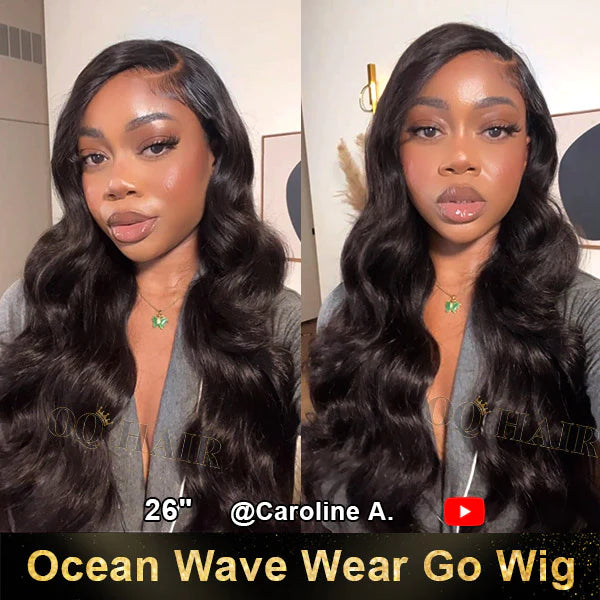What Does Density Mean in Wigs and How to Choose?
For those who are new to wigs, they do not have a deep understanding of the density of wigs. Not sure how to pick a wig based on density. Gaining the look you want in wigs requires knowing what density in wigs entails. We will discuss what wig density is in this blog post and how to select the appropriate density for your requirements.

What Does Density Mean in Wigs
Wig density refers to the amount of hair strands per square inch on a wig cap and how closely packed the hair fibers are. To put it another way, it's a measurement of the wig's hair's perceived thickness or thinness. Wig density is typically expressed as a percentage, such as 100%, 130%, 150%, 180%, and so on. The greater the number, the thicker the hair.
Wig Density ChartThe spectrum of human hair wig density options can be overwhelming. Wig density charts can clearly show how different densities look. The included wig density chart will help you understand your options.
.

Misunderstandings about Choosing Wig Density
1. Most people may think that the denser the wig, the higher the quality. This is one of the most common misconceptions, in fact, density only describes the thickness of the hair, not the overall quality of the wig. The quality of wigs includes many factors, such as whether the wig cap is breathable, the elasticity of the lace, whether the hair has been chemically treated, whether it is mixed with inferior wigs, etc. Quality wigs are available in a variety of densities. Additionally, what you need to know is that the thicker the wig, the more hair there will be and the more time it will take to style and maintain. Additionally, if you choose a shorter length, too much density may result in an unnatural, overly thick look.
2. In the wig market nowadays, there is no standard for uniform density. Density numbers, like 150%, 180%, or 200%, are not uniformly assigned by manufacturers. In general, the differences won't be very apparent, however, there exist few differences. So you can ask customer service before purchasing to get a more accurate understanding. You can also consult customer service staff or look for reviews on social platforms before purchasing to get a more in-depth reference.
3. Some people think that choosing a low-density wig will keep you cool in the summer, and choosing a high-density wig to keep you warm in the winter. However, it is not as simple as choosing low density in summer and high density in winter. Although there is a certain connection, the key factor is the heat dissipation of the wig, which depends more on the structure and overall quality of the wig cap.

How to Choose the Right Density
You can refer to the following factors to choose a wig that is more suitable for you:1. Ideal Hairstyle
Think about your ideal hairstyle. Shorter-length wigs (pixie and bob wigs) work well with lower densities. Wigs with high density fit longer hairstyles better. If you want it to look sleeker, for instance, you may go with a lesser density. However, if you are going for a chic and stunning look, a wig with more density would be more fitting.
2. Your Face Shape
Your choice of wig density may also be influenced by your face shape. Thinner wigs can soften angular faces, thicker wigs help balance out round faces. There are some people who believe head size is also a factor, and wigs with higher density look better for small heads, not suitable for people with big heads. Conversely, low-density wigs work better proportional balance for people with large heads. While making purchase choice, natural head size should be taken into account.
3. Life Span
within the same quality situation. The wig density could slightly affect how long it lasts. High-density wigs usually last longer because they have more hair to withstand abrasion.

If you are still feeling indecisive, try a 180% density wig is a good choice. A density of 180% is generally suitable for all wig lengths and textures, and it's widely acknowledged in the market as the most natural and voluminous density available. Moreover from the feedback of tens of thousands of customers, we have discovered that a density of 150%-180% works well for both straight and wavy hair types (1–3b), making it an ideal choice for daily use by most individuals. For those with curly hair (3c-4c), densities between 180% and 200% are more suitable, particularly favored by stylish young women for a perfect, fashionable look.
OQ Hair Best Selling 150% Density Wig
1. Short Bob Wig 150% Density

2. 150% Density Layered Straight Wig

OQ Hair Best Selling 180% Density Wig
1.Water Wave 180% Density Wig

2. Ocean Wave 180% Density Wig

OQ Hair Best Selling 200% Density Wigs
1. Kinky Straight 200% Density Wig

2. Kinky Curly 200% Density Wig

Final Word
Understanding what density means in wigs is important before buying a new hair. It is a factor that can influence the naturalness, comfort, and style of your daily look. You can find it in OQ Hair online store no matter what kind of wig or hair extension you like. Moreover, we also provide customized services if you need. When selecting your new wig, take into account OQ Hair! A good life to you and happy wig shopping!
Read More
How to Measure and Choose Wig Length for Beginners









